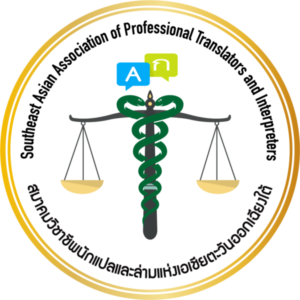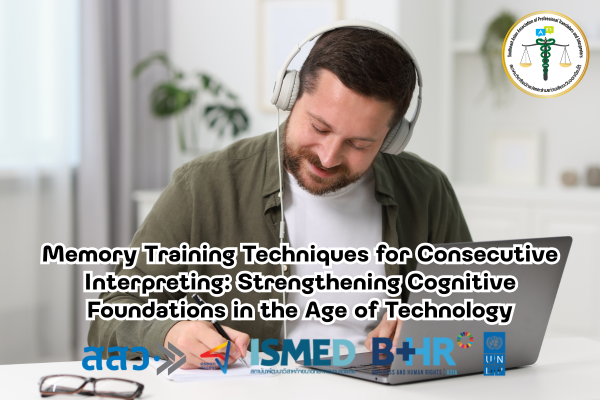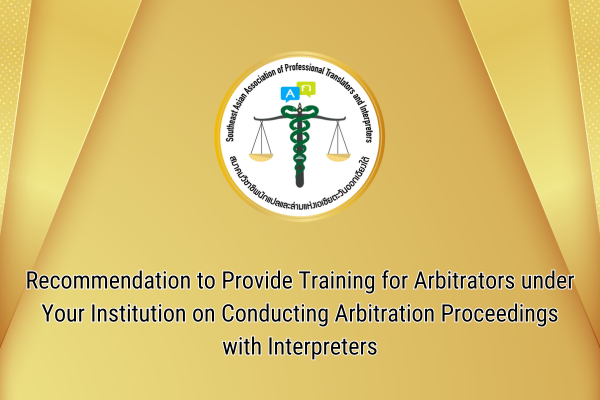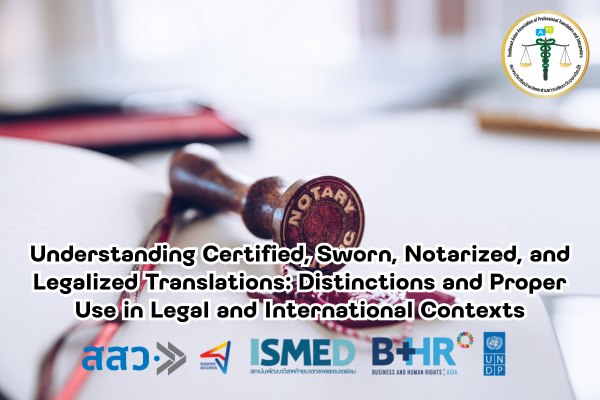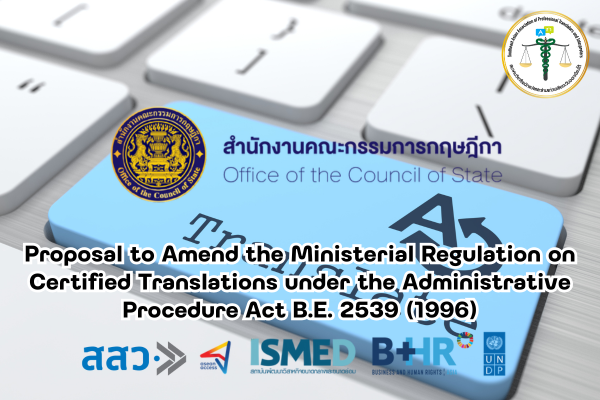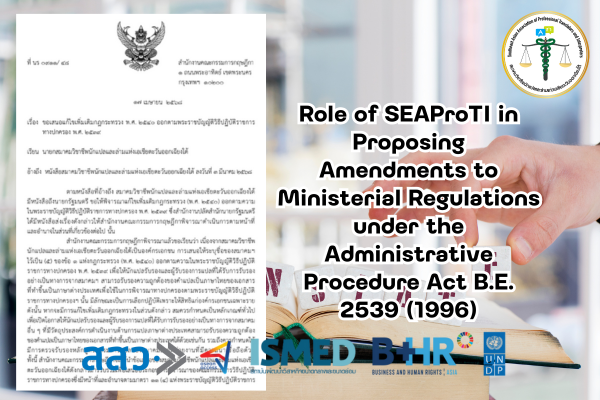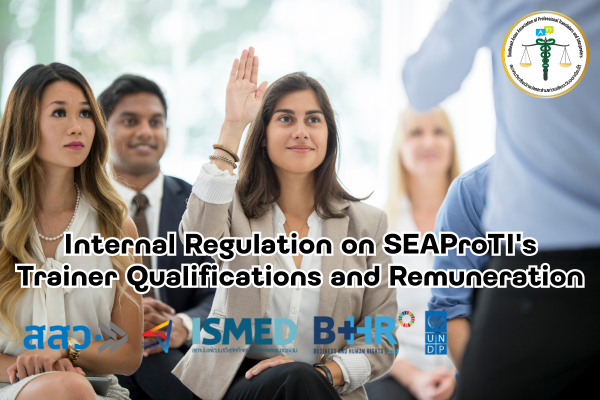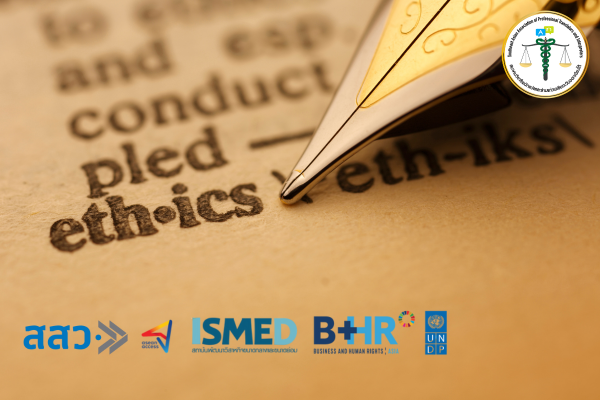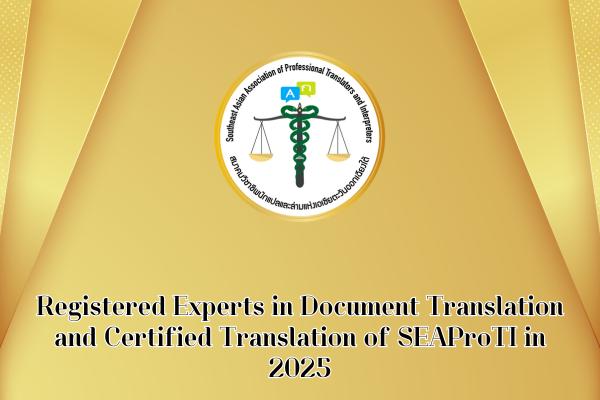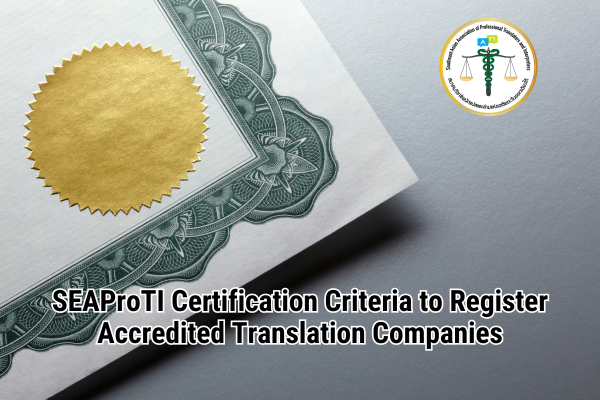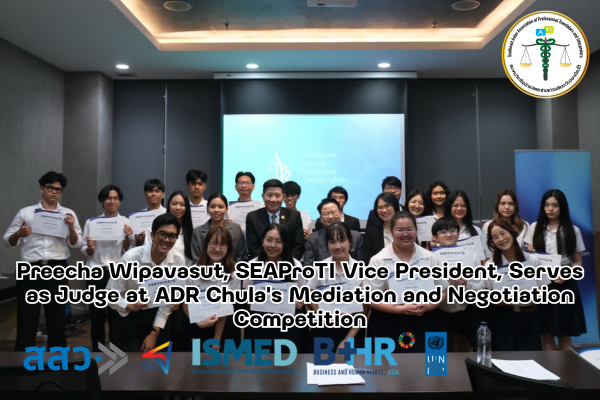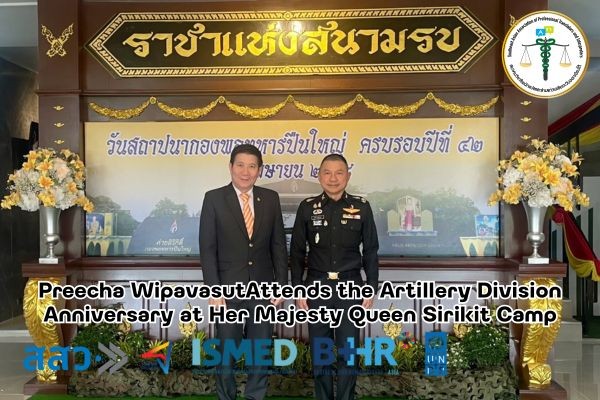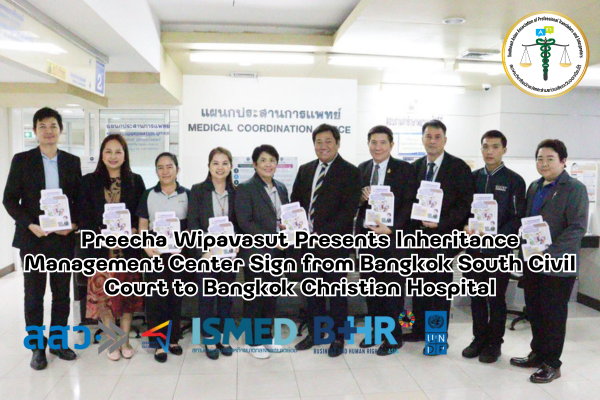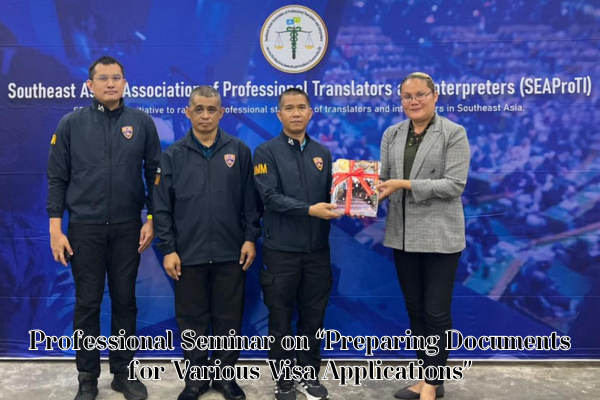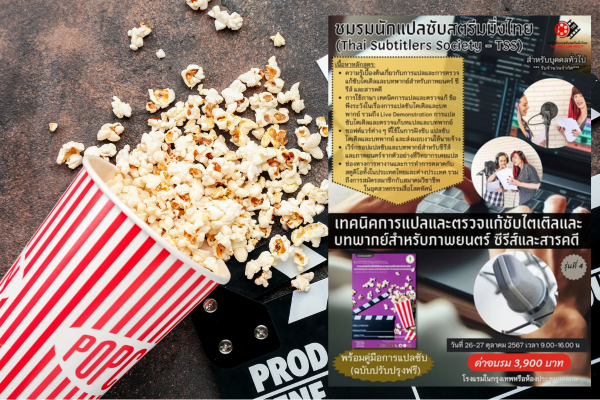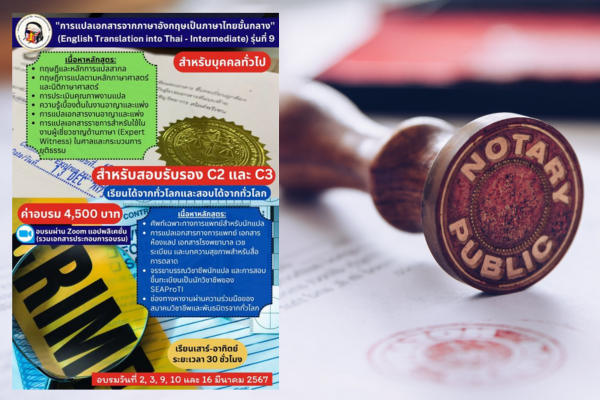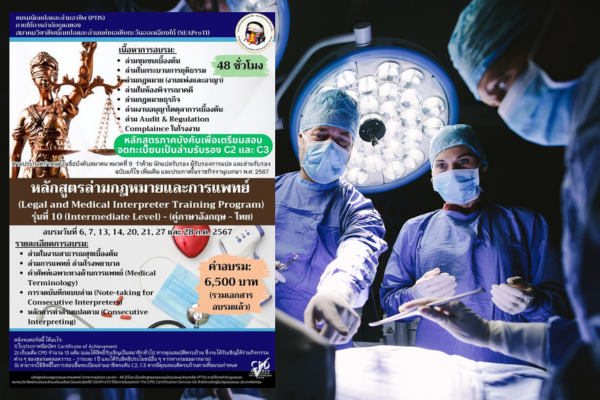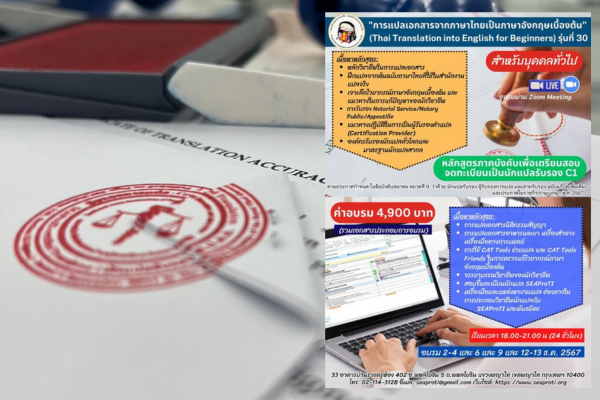Memory Training Techniques for Consecutive Interpreting:
Strengthening Cognitive Foundations in the Age of Technology
18 April 2025, Bangkok – Consecutive interpreting demands exceptional cognitive agility, especially in memory retention, focus, and recall. As digital tools become increasingly prevalent, there is a growing need to reinforce interpreters’ innate cognitive capacities to ensure accuracy and professionalism. This paper presents evidence-based memory training techniques tailored to the context of consecutive interpreting. It aims to guide interpreters, trainers, and students in building “mental fortitude” through structured, daily practices.
Consecutive interpreting is a cognitively demanding task that hinges on the interpreter’s ability to process, store, and reproduce spoken content accurately. Unlike simultaneous interpreting, where delivery is nearly immediate, consecutive interpreting requires memory storage over intervals ranging from seconds to several minutes. In light of emerging concerns over over-reliance on digital aids, it is imperative to revisit and reinforce core memory techniques that sustain interpreters’ performance. This article explores eight proven methods that enhance short-term memory, working memory, and long-term retention for interpreters in training and professional practice.
1. Visualization
Visualization involves transforming abstract verbal information into concrete mental images. This strategy enhances encoding by linking information with vivid imagery.
- Application: Interpreters can associate numbers or names with visual metaphors. For example, “50%” may be visualized as half a pie or a half-filled glass.
- Training Tip: Practice listening to 2–3-minute speech segments and visualize main ideas as a story or sequence of images.
2. Chunking
Chunking allows interpreters to group data into smaller, manageable units, thereby reducing cognitive load and improving recall.
- Application: Instead of memorizing ten discrete facts, group them into 3–4 thematic categories (e.g., economic data, political figures, timelines).
- Training Tip: Practice summarizing lists or short paragraphs into three main clusters after active listening.
3. Note-Taking Optimization
Effective note-taking focuses on content over verbatim transcription. The goal is to support memory, not replace it.
- Application: Develop a personal system using symbols, arrows, and abbreviations.
- Training Tip: Listen to 1–2 minute audio clips, take sparse notes, and then reconstruct the full message with clarity and coherence.
4. Shadowing
Shadowing enhances auditory memory and builds real-time language processing skills.
- Application: Repeat a speaker’s words verbatim with a slight delay, focusing on intonation, structure, and terminology.
- Training Tip: Begin with familiar language podcasts or speeches, and gradually move to less predictable or technical content.
5. Memory Palace (Method of Loci)
This ancient mnemonic device links speech elements to spatial locations in a familiar environment.
- Application: Mentally assign parts of a speech to rooms in your home or landmarks on a walking route.
- Training Tip: After a speech, “walk” through your mental space to retrieve associated content.
6. Dual-Task Training
This technique trains working memory and attention control by performing two tasks simultaneously.
- Application: Listen to a speech while repeating a number sequence or writing down unrelated words.
- Training Tip: Increase difficulty gradually, such as interpreting a paragraph while recalling a phone number or to-do list.
7. Repetition and Review
Spaced repetition improves long-term retention and prevents information decay.
- Application: Revisit interpreted content at regular intervals—10 minutes, 1 hour, 1 day.
- Training Tip: Record speeches, interpret them, then recall content without listening again, adjusting time gaps to reinforce memory.
8. Focused Listening Exercises
These exercises develop concentration and immediate recall abilities, which are vital during real-life interpreting assignments.
- Application: Listen to a 2–3 minute passage without taking notes and immediately reproduce as much as possible.
- Training Tip: Extend the duration of listening passages over time to build sustained attention.
Discussion: The Role of Deliberate Practice
Neuroscientific studies have shown that short-term memory and working memory can be strengthened with consistent, deliberate practice. The techniques outlined in this paper align with cognitive psychology principles and offer interpreters a structured path to develop and maintain the cognitive stamina needed for high-stakes assignments. By allocating just 15–30 minutes per day, interpreters can mitigate cognitive overload and foster more intuitive processing, especially during emotionally or linguistically complex proceedings.
Conclusion
In an age where interpreters increasingly rely on digital recordings, transcription tools, and glossaries, the importance of mental training cannot be overstated. These eight memory techniques offer practical, research-informed strategies to fortify the cognitive skills essential to the interpreting profession. As interpreting continues to evolve alongside technology, maintaining a balance between mental mastery and external tools will be key to ensuring accuracy, integrity, and professional excellence.
SEAProTI’s certified translators, translation certification providers, and certified interpreters:
The Southeast Asian Association of Professional Translators and Interpreters (SEAProTI) has officially announced the criteria and qualifications for individuals to register as “Certified Translators,” “Translation Certification Providers,” and “Certified Interpreters” under the association’s regulations. These guidelines are detailed in Sections 9 and 10 of the Royal Thai Government Gazette, issued by the Secretariat of the Cabinet under the Office of the Prime Minister of the Kingdom of Thailand, dated July 25, 2024, Volume 141, Part 66 Ng, Page 100.
To read the full publication, visit: the Royal Thai Government Gazette
เทคนิคการฝึกความจำสำหรับการล่ามแบบพูดตาม: เสริมสร้างความแข็งแกร่งทางการรับรู้ในยุคดิจิทัล
18 เมษายน 2568, กรุงเทพมหานคร – การล่ามแบบพูดตาม (Consecutive Interpreting) เป็นกิจกรรมที่ใช้ความสามารถทางสติปัญญาอย่างเข้มข้น โดยเฉพาะในด้านความจำระยะสั้น การให้ความสนใจ และการเรียกข้อมูลกลับมาใช้ ในยุคที่เทคโนโลยีเข้ามามีบทบาทมากขึ้น จึงมีความจำเป็นอย่างยิ่งที่ล่ามจะต้องพัฒนาและคงไว้ซึ่งทักษะทางความจำพื้นฐานที่เป็นหัวใจของวิชาชีพ บทความฉบับนี้นำเสนอเทคนิคการฝึกความจำที่ได้รับการพิสูจน์ว่าสามารถช่วยพัฒนาศักยภาพของล่ามแบบพูดตามได้อย่างมีประสิทธิภาพ
การล่ามแบบพูดตามต่างจากการล่ามพร้อมกัน ตรงที่ล่ามจะต้องฟังข้อความเป็นช่วง ๆ และถ่ายทอดเนื้อหาในภายหลัง ซึ่งกระบวนการนี้จำเป็นต้องอาศัยความสามารถในการเก็บรักษาและเรียกข้อมูลที่ได้รับฟังอย่างแม่นยำ ปัจจัยสำคัญคือความจำระยะสั้น ความจำเชิงปฏิบัติ (working memory) และทักษะการให้ความสนใจอย่างต่อเนื่อง บทความนี้จะเสนอแนะแนวทางฝึกความจำที่สามารถนำไปปรับใช้ในการฝึกฝนของล่ามทั้งในระดับผู้เริ่มต้นและมืออาชีพ
1. การสร้างภาพในจินตนาการ (Visualization)
เทคนิคนี้อาศัยการแปลงข้อมูลนามธรรมให้กลายเป็นภาพในใจที่จับต้องได้
- แนวทางปฏิบัติ: ล่ามอาจจินตนาการตัวเลข เช่น “50%” เป็นภาพของพายที่ถูกแบ่งครึ่ง
- การฝึกฝน: ฟังสุนทรพจน์หรือบทพูดสั้น ๆ แล้วพยายามวาดภาพเหตุการณ์หรือเรื่องราวตามที่ได้ยิน
2. การแบ่งกลุ่มข้อมูล (Chunking)
การแบ่งข้อมูลเป็นกลุ่มย่อยที่มีความหมาย จะช่วยลดภาระของความจำและเพิ่มประสิทธิภาพในการเรียกข้อมูล
- แนวทางปฏิบัติ: แทนที่จะจำรายการสิบรายการแยกกัน ให้จัดกลุ่มเป็นหัวข้อใหญ่ 3–4 กลุ่ม
- การฝึกฝน: ฟังเนื้อหาสั้น ๆ และสรุปให้เหลือเพียงไม่กี่หมวดหมู่ที่สำคัญ
3. การจดบันทึกอย่างมีประสิทธิภาพ (Note-Taking Optimization)
การจดบันทึกที่ดีต้องช่วยเสริมความจำ ไม่ใช่การบันทึกทุกคำที่ได้ยิน
- แนวทางปฏิบัติ: พัฒนาระบบย่อหรือสัญลักษณ์ส่วนตัวเพื่อใช้จดแนวคิดหลัก
- การฝึกฝน: ฟังบทพูด 1–2 นาที จดบันทึกให้น้อยที่สุด และพยายามเรียบเรียงเนื้อหาให้สมบูรณ์หลังจบการฟัง
4. การเงาตามเสียง (Shadowing)
เทคนิคนี้ช่วยเสริมความจำในการฟังและการประมวลผลภาษาแบบทันที
- แนวทางปฏิบัติ: พูดตามผู้พูดด้วยเวลาล่าช้าเล็กน้อย โดยพยายามรักษารูปแบบและจังหวะของคำพูด
- การฝึกฝน: เริ่มจากพอดคาสต์หรือบทพูดง่าย ๆ แล้วค่อย ๆ เพิ่มความซับซ้อนของเนื้อหา
5. พระราชวังแห่งความจำ (Memory Palace / Method of Loci)
เป็นวิธีเชื่อมโยงเนื้อหากับตำแหน่งในพื้นที่ที่คุ้นเคย เพื่อใช้ช่วยในการเรียกความจำ
- แนวทางปฏิบัติ: จัดเก็บหัวข้อสำคัญของบทพูดไว้ในสถานที่ในจินตนาการ เช่น ห้องต่าง ๆ ในบ้าน
- การฝึกฝน: หลังจากฟังบทพูด ให้ลอง “เดิน” ผ่านพื้นที่ดังกล่าวในจินตนาการเพื่อเรียกข้อมูลที่เชื่อมโยงไว้
6. การฝึกสมองแบบสองหน้าที่ (Dual-Task Training)
การทำงานหลายอย่างพร้อมกันช่วยฝึกความจำเชิงปฏิบัติและการควบคุมความสนใจ
- แนวทางปฏิบัติ: ฟังเนื้อหาไปพร้อมกับทำกิจกรรมอีกอย่าง เช่น จดคำศัพท์ที่ไม่เกี่ยวข้อง หรือจำลำดับตัวเลข
- การฝึกฝน: ค่อย ๆ เพิ่มความซับซ้อน เช่น ล่ามขณะที่จำรายการเลขห้าหลัก
7. การทบทวนแบบเว้นช่วงเวลา (Spaced Repetition)
เทคนิคนี้ช่วยย้ายข้อมูลจากความจำระยะสั้นไปสู่ความจำระยะยาว
- แนวทางปฏิบัติ: ทบทวนเนื้อหาที่ล่ามไปแล้วหลังจากช่วงเวลาที่ห่างกัน เช่น 10 นาที, 1 ชั่วโมง, 1 วัน
- การฝึกฝน: อัดเสียงตนเองขณะล่าม แล้วนำมาทบทวนตามช่วงเวลาที่กำหนด
8. การฟังอย่างจดจ่อ (Focused Listening Exercises)
การฝึกฝนนี้ช่วยพัฒนาความสามารถในการจดจำรายละเอียดโดยไม่ใช้การจดบันทึก
- แนวทางปฏิบัติ: ฟังบทพูดยาว 2–3 นาทีโดยไม่จด แล้วสรุปเนื้อหาให้ได้มากที่สุดเท่าที่จำได้
- การฝึกฝน: เพิ่มความยาวของบทพูดอย่างต่อเนื่อง เพื่อฝึกการจดจ่อและความจำในช่วงเวลานาน
การอภิปราย: พลังของการฝึกฝนอย่างมีเป้าหมาย
งานวิจัยด้านประสาทวิทยาศาสตร์สนับสนุนว่า ความจำสามารถพัฒนาได้ผ่านการฝึกฝนอย่างต่อเนื่องและมีจุดมุ่งหมาย เทคนิคที่นำเสนอข้างต้นสอดคล้องกับหลักจิตวิทยาการเรียนรู้ และสามารถนำไปใช้เสริมสร้างความแข็งแกร่งทางสติปัญญาได้อย่างเป็นระบบ โดยใช้เวลาเพียงวันละ 15–30 นาที ล่ามก็สามารถยกระดับทักษะทางความจำและลดการพึ่งพาเครื่องมือดิจิทัลได้อย่างมีประสิทธิภาพ
สรุป
แม้เครื่องมือดิจิทัลจะช่วยอำนวยความสะดวกในงานล่าม แต่ความสามารถทางความจำของล่ามยังคงเป็นพื้นฐานที่ไม่สามารถละเลยได้ เทคนิคทั้งแปดข้อที่นำเสนอนี้เป็นเครื่องมือฝึกฝนที่สามารถนำไปใช้จริง เพื่อส่งเสริมการจดจำ การเรียกข้อมูล และความสามารถในการแปลสารอย่างมีคุณภาพ ทั้งในห้องฝึกซ้อมและในสถานการณ์ล่ามจริง
เกี่ยวกับนักแปลรับรอง ผู้รับรองการแปล และล่ามรับรองของสมาคมวิชาชีพนักแปลและล่ามแห่งเอเชียตะวันออกเฉียงใต้
สมาคมวิชาชีพนักแปลและล่ามแห่งเอเชียตะวันออกเฉียงใต้ (SEAProTI) ได้ประกาศหลักเกณฑ์และคุณสมบัติผู้ที่ขึ้นทะเบียนเป็น “นักแปลรับรอง (Certified Translators) และผู้รับรองการแปล (Translation Certification Providers) และล่ามรับรอง (Certified Interpreters)” ของสมาคม หมวดที่ 9 และหมวดที่ 10 ในราชกิจจานุเบกษา ของสำนักเลขาธิการคณะรัฐมนตรี ในสำนักนายกรัฐมนตรี แห่งราชอาณาจักรไทย ลงวันที่ 25 ก.ค. 2567 เล่มที่ 141 ตอนที่ 66 ง หน้า 100 อ่านฉบับเต็มได้ที่: นักแปลรับรอง ผู้รับรองการแปล และล่ามรับรอง

